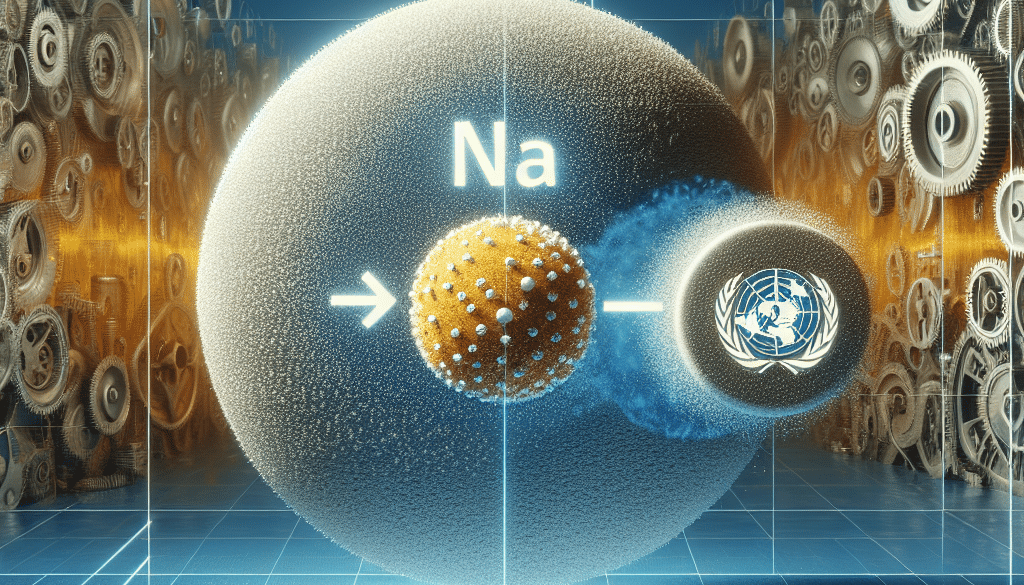WHO Sodium Reduction: New Benchmarks Bring Challenges
-
Table of Contents
- WHO Sodium Reduction Benchmarks: Navigating New Challenges
- The Urgency of Sodium Reduction
- WHO’s New Sodium Reduction Benchmarks
- Challenges for Governments
- Challenges for the Food Industry
- Challenges for Consumers
- Case Studies and Success Stories
- Statistics and Research Findings
- Conclusion: The Path Forward
- ETChem’s Protein Products: A Healthy Alternative
WHO Sodium Reduction Benchmarks: Navigating New Challenges

The World Health Organization (WHO) has long been at the forefront of global health initiatives, and its recent push for sodium reduction is no exception. With cardiovascular diseases as the leading cause of death worldwide, the WHO’s new sodium reduction benchmarks aim to tackle one of the root causes head-on. However, these benchmarks bring with them a set of challenges that governments, industries, and consumers must navigate to achieve a healthier future.
The Urgency of Sodium Reduction
Excessive sodium intake is a significant health concern, linked to high blood pressure, heart disease, stroke, and other cardiovascular conditions. The WHO recommends that adults consume less than 2,000 mg of sodium per day, yet most people consume far more. This overconsumption is largely due to the high levels of sodium in processed and prepared foods.
WHO’s New Sodium Reduction Benchmarks
In response to this global health issue, the WHO has set new benchmarks for sodium content in over 60 food categories. These benchmarks are designed to guide food manufacturers in reducing sodium levels in their products, thereby helping consumers to lower their sodium intake.
Challenges for Governments
- Regulatory Frameworks: Establishing and enforcing regulations that align with WHO benchmarks can be complex and politically sensitive.
- Public Health Campaigns: Governments must invest in education and awareness campaigns to inform the public about the risks of high sodium intake.
- Monitoring and Evaluation: Tracking progress and ensuring compliance with sodium reduction targets requires robust monitoring systems.
Challenges for the Food Industry
- Product Reformulation: Reducing sodium without compromising taste or shelf-life demands significant research and development.
- Consumer Acceptance: Gradually lowering sodium levels to allow consumer palates to adjust without losing market share is a delicate balance.
- Cost Implications: The financial impact of reformulating products can be substantial, particularly for small and medium-sized enterprises.
Challenges for Consumers
- Behavioral Change: Encouraging individuals to choose lower-sodium options and read nutrition labels requires a shift in consumer behavior.
- Access to Alternatives: In some regions, access to fresh and affordable low-sodium foods is limited, making compliance difficult.
- Educational Disparities: Varying levels of nutrition literacy can affect the ability of different population groups to make informed food choices.
Case Studies and Success Stories
Several countries have made strides in sodium reduction, providing valuable case studies. For example, the United Kingdom’s voluntary salt reduction program has led to a significant decrease in average salt consumption. Similarly, South Africa’s legislation on sodium content in processed foods has set a precedent for other nations to follow.
Statistics and Research Findings
Research shows that even modest reductions in sodium intake can have a substantial impact on public health. For instance, a 10% reduction over ten years could prevent millions of cardiovascular-related deaths globally.
Conclusion: The Path Forward
The WHO’s new sodium reduction benchmarks are a critical step towards combating non-communicable diseases. While the challenges are significant, the combined efforts of governments, industry, and consumers can lead to a healthier global population. By embracing innovation, education, and collaboration, we can overcome these hurdles and create a future with less sodium and more health.
ETChem’s Protein Products: A Healthy Alternative
In the quest for healthier food options, protein plays a vital role. ETChem’s range of collagen products offers a nutritious alternative to high-sodium foods. Their high-quality collagens are perfect for various applications, from nutraceuticals to food and beverage products, supporting health and wellness without compromising on taste or quality.
About ETChem:
ETChem, a reputable Chinese Collagen factory manufacturer and supplier, is renowned for producing, stocking, exporting, and delivering the highest quality collagens. They include marine collagen, fish collagen, bovine collagen, chicken collagen, type I collagen, type II collagen and type III collagen etc. Their offerings, characterized by a neutral taste, instant solubility attributes, cater to a diverse range of industries. They serve nutraceutical, pharmaceutical, cosmeceutical, veterinary, as well as food and beverage finished product distributors, traders, and manufacturers across Europe, USA, Canada, Australia, Thailand, Japan, Korea, Brazil, and Chile, among others.
ETChem specialization includes exporting and delivering tailor-made collagen powder and finished collagen nutritional supplements. Their extensive product range covers sectors like Food and Beverage, Sports Nutrition, Weight Management, Dietary Supplements, Health and Wellness Products, ensuring comprehensive solutions to meet all your protein needs.
As a trusted company by leading global food and beverage brands and Fortune 500 companies, ETChem reinforces China’s reputation in the global arena. For more information or to sample their products, please contact them and email karen(at)et-chem.com today.




